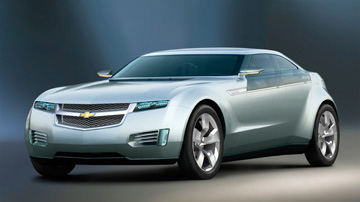
In the next 10-15 years, there will be millions of vehicles on U.S. roads employing lithium-ion battery technology, predicts Compact Power Inc. CEO Prabhakar Patil.
“Low oil supplies and U.S. corporate average fuel economy regulations are going to drive the demand for more hybrids, if not plug-in hybrids,” Patil tells Ward’s. “But, nevertheless, they will be powered by Li-ion batteries.”
New CAFE legislation passed last year mandates a fleet average 35 mpg (6.7 L/100 km) for cars and trucks sold in the U.S. by 2020.
CPI, a subsidiary of LG Chem Ltd., already has supplied General Motors Corp. with four Li-ion batteries for testing in the upcoming Chevrolet Volt plug-in, hybrid-electric vehicle, which is slated to hit the market in 2010.
Troy, MI-based CPI also will provide batteries to Hyundai Motor Co. Ltd. next year for use in a new HEV. Patil declines to reveal details of the Hyundai hybrid, citing customer confidentiality.
Prior to taking the helm at CPI, Patil spent 27 years at Ford Motor Co. in various capacities, including heading up the auto maker’s hybrid-technology division and serving as the chief engineer for the Ford Escape Hybrid.
Patil says CPI has overcome problems inherent to Li-ion batteries, such as overheating and lack of durability.

Overheating is caused by metal debris left inside a battery cell during the manufacturing process. It can work its way through a cell wall and cause an internal short circuit, which could lead to overheating and possible fire.
To eliminate the problem, CPI developed cell separators that are five to six times stronger than those now used, Patil says, noting separator issues are what led to the widely reported fires in Li-ion-powered laptop computers and other consumer electronics.
Although the CPI separators still are composed of plastic, they are coated with ceramic for extra protection.
“Traditional separators get hot and melt and shrink,” Patil says. “That makes the hole get bigger and the short get bigger and generates more heat. In our case, the separator doesn’t shrink, so if there is a short it’s localized.
“The (ceramic coating) is what gives it its strength, as well as resistance to melting and shrinking,” he adds. “It’s safe enough for production vehicles, which we’re gearing up for.”
While CPI’s separator limits damage from metal fragments, the battery packs still must complete rigorous testing to ensure they remain stable in the event of an accident. So far, test results are encouraging, Patil says.
“Some of the testing we’re going through is crash-testing scenarios for the batteries,” he says. “We’re ensuring that if the battery fails (during a crash) it doesn’t pose a safety hazard.
“We’re also conducting nail-penetration and crush tests. We’re going through all of that on a cell and pack level and, based on (the) data, we are comfortable and confident to put (the batteries) into a production vehicle.”
In addition, CPI has perfected battery thermal management and systems integration, Patil says.
The last obstacle facing the widespread application of Li-ion batteries is cost, which is several times that of the nickel-metal-hydride batteries found in most hybrids today.
CPI has made significant headway there by streamlining Li-ion battery pack design and using manganese-based chemistry, which is “an abundant material and very stable in its price,” Patil says.
Despite closing the gap over the last several years, Li-ion batteries remain costly, he says, declining to reveal the actual price per unit of a CPI battery pack.
A leasing program, where the auto maker would take back the batteries for re-use, could further erode or even eliminate the cost disadvantage, Patil says.
“There’s probably a way to work the customer-value equation in terms of capturing some of the residual value of the battery, which comes back to leasing rather than selling outright,” he says. “Even after 10 years, Li-ion batteries retain 80% of their power. And given that so much is left in the battery it can be put to good use in the utility industry or for standby applications.
“We need to capture that residual value.”
Additionally, consumers may be willing to pay a price premium for vehicles utilizing Li-ion batteries as the cost of gasoline continues to rise, Patil says.
Regardless of how implementation unfolds, the technology is clearly the way of the future, Patil maintains.
“Even though electrification of the vehicle may not be the perfect solution, we don’t have the luxury of waiting for the silver bullet,” he says. “We have to pursue electrification as a solution to address the oil supply and (carbon dioxide) greenhouse gases.”


